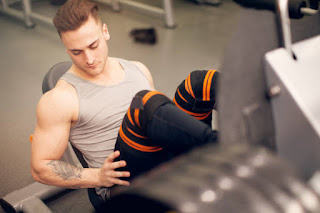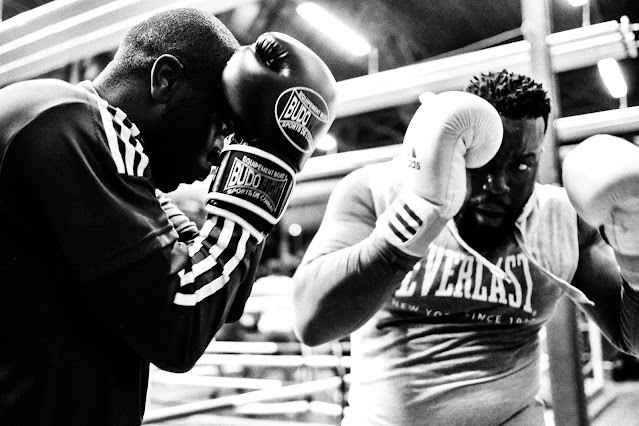How to Put on Knee Wraps: A Step-by-Step Guide
Knee wraps are commonly used by athletes and weightlifters to provide support, stability, and compression to the knee joint. Properly putting on knee wraps ensures a secure fit and maximizes their benefits. In this guide, we will provide a step-by-step process on how to put on knee wraps effectively. We'll cover different types of knee wraps, including those without Velcro, and offer specific instructions for popular brands like RDX and Titan. Additionally, we'll discuss the differences between knee wraps and sleeves, explain the appropriate tightness, and provide tips on breaking in knee wraps for optimal performance.
How to Put on Knee Wraps
To put on knee wraps, follow these general steps:
Clean and Dry Knees: Ensure your knees are clean and dry before applying the wraps for a better grip.
Position the Wraps: Hold the end of the knee wrap and position it just above the knee joint. The wrap should be on the inside of your leg.
Begin Wrapping: Wrap the knee wrap tightly around your leg in a diagonal pattern, starting from the inside and moving towards the outside of the leg. Each wrap should overlap the previous one by about half of its width.
Apply Tension: As you wrap, apply tension by pulling the wrap firmly, but not excessively, to provide support and compression.
Continue Wrapping: Continue wrapping until you reach just below the knee joint. Ensure the wraps are snug but not overly tight, allowing for proper blood circulation.
Secure the Wraps: Use the Velcro or any fastening mechanism provided by the wraps to secure them in place.
How to use knee wraps without Velcro?
If your knee wraps do not have Velcro, follow the same steps as mentioned earlier. Instead of using Velcro to secure the wraps, you can tie the loose end in a knot or use tape to hold them in place. Make sure the wraps are tight enough to provide support but not so tight that they restrict circulation or cause discomfort.
How tight should knee wraps be?
Knee wraps should be tight enough to provide support and compression, but not excessively tight. You should be able to move your knee joint comfortably while wearing knee wraps. Avoid wrapping them too loosely as it may not provide adequate support. It's important to find the right balance to ensure proper blood circulation and support during your activities.
Knee wraps vs. sleeves: What are the differences?
Knee wraps and knee sleeves are both used to support the knees, but they have some key differences:
Knee Wraps: Knee wraps are made of elastic material and are designed to provide compression, stability, and support during heavy lifting. They are wrapped tightly around the knee joint and offer a significant increase in support and potential for lifting heavier weights. However, they require proper technique to put on and may limit range of motion.
Knee Sleeves: Knee sleeves are typically made of neoprene and provide mild compression and warmth to the knee joint. They are easier to put on and allow for greater flexibility and mobility. Knee sleeves are suitable for various activities, including weightlifting, running, and general knee support.
How to break in knee wraps?
Breaking in knee wraps helps improve their elasticity and performance. Here's how you can break in knee wraps:
Stretch the Wraps: Before using knee wraps for the first time, stretch them by pulling them in different directions. This helps loosen the fibers and improve their flexibility.
Use Them in Training: Start using the knee wraps in your training sessions with lighter weights. Gradually increase the weight and intensity as you become comfortable and accustomed to the wraps.
Practice Proper Technique: Learn and practice the correct technique for wrapping knee wraps. This ensures even tension and proper support throughout your training sessions.
Wash and Dry: Follow the manufacturer's instructions for washing and drying the knee wraps. This helps maintain their elasticity and performance over time.
FAQs
How to Put on a Wrap Knee Brace
To put on a wrap knee brace, follow these steps:
Place the wrap knee brace below your knee joint.
Hold one end of the brace and wrap it around your leg.
Continue wrapping until the brace is snug and secure.
Fasten the Velcro or any closure mechanism provided to keep the brace in place.
Adjust the tightness if needed for comfort and support.
How to Wear Knee Straps
To wear knee straps, follow these steps:
Position the knee strap just below your kneecap.
Wrap the strap around your leg, crossing it above the kneecap.
Secure the strap tightly but comfortably.
Adjust the strap's position and tightness to find the optimal support for your knee.
How Tight to Wrap Knee Wraps
Wrap knee wraps tightly enough to provide support, stability, and compression, but not excessively tight. The wraps should allow for proper blood circulation and a comfortable range of motion. Adjust the tightness based on your comfort level and the level of support needed for your activity.
When to Wear a Knee Wrap
Wear a knee wrap during activities that put stress on the knee joint, such as weightlifting, powerlifting, or intense sports. Knee wraps provide added support, stability, and compression to help protect the knee and enhance performance during these activities.
Can You Wear a Knee Wrap All Day?
It is not recommended to wear a knee wrap all day unless specifically advised by a healthcare professional. Knee wraps are primarily designed for use during intense activities or when additional support is needed. Prolonged use of knee wraps without proper breaks may restrict natural movement and potentially weaken the knee muscles and ligaments over time.
Do Knee Wraps Help with Knee Pain?
Knee wraps can provide temporary relief and support for knee pain or discomfort. They help stabilize the knee joint, reduce swelling, and provide compression, which may alleviate pain caused by certain conditions or injuries. However, knee wraps should not be used as a long-term solution for chronic knee pain, and it's recommended to consult a healthcare professional for proper diagnosis and treatment options.
Conclusion
Putting on knee wraps correctly is essential to maximize their support and benefits. Whether you're using knee wraps with or without Velcro, following the proper technique and applying the right tension is crucial. Brands like RDX and Titan have their specific instructions for putting on their knee wraps. Remember to find the appropriate tightness that allows for proper blood circulation and support. Differentiate knee wraps from knee sleeves based on their purpose and design. Finally, break in knee wraps gradually to improve their flexibility and performance. With these guidelines, you can confidently use knee wraps to support your training and enhance your performance.

.jpg)

Comments
Post a Comment